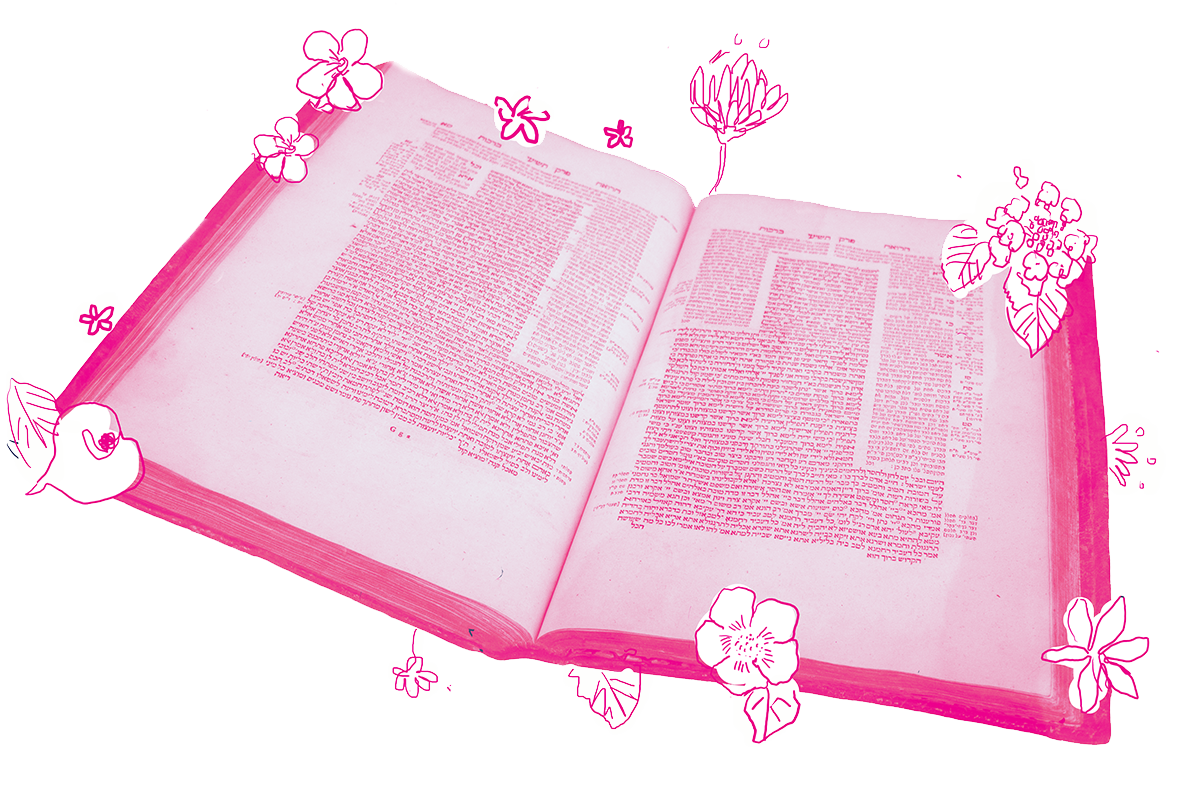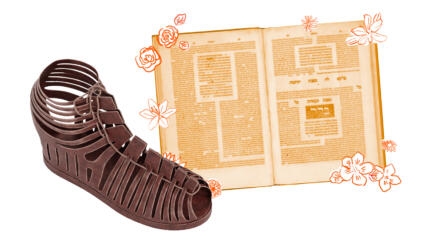Here’s an interesting conundrum: Leviticus 21:14 teaches that the high priest is forbidden to marry a widow, divorcee or sex worker. A regular priest, however, can marry a widow. So what if a regular priest is engaged to a widow, and then is appointed high priest? Can he go through with the wedding?
Two days ago, we actually got a sneak peek of the mishnah on today’s daf that answers this question:
If a priest betrothed a widow and was appointed to be high priest, he may marry her.
The mishnah then illustrates this ruling with a story:
With your help, My Jewish Learning can provide endless opportunities for learning, connection and discovery.
And there was an incident with Yehoshua ben Gamla, who betrothed Marta bat Baitos, a widow, and the king appointed him to be high priest, and he nevertheless married her.
The story as it is told is a simple factual account. There was a man, a priest, named Yehoshua ben Gamla, who was engaged to a widow named Marta bat Baitos, and married her even though he was appointed high priest during the course of their engagement. The narrative is morally neutral, and functions as a simple example of the rabbinic ruling.
The Gemara then retells the mishnah’s story but reads it explicitly and negatively as offering a strong critique of the priesthood during the Second Temple period. The Gemara notes that the mishnah’s language — and the king appointed him to be high priest — doesn’t speak to the question of whether or not Yehoshua ben Gamla was actually qualified for the job. In light of this uncertainty:
Rav Yosef said: I see a conspiracy here, as Rav Asi said: Marta bat Baitos brought a half-se’a full of dinars (coins) to King Yannai until he appointed Yehoshua ben Gamla high priest.
A half se’a of dinars was a big bribe, the volume of 72 eggs — or a little more than a gallon. That’s a LOT of gold. According to Rav Yosef and Rav Asi, this was because Yehoshua ben Gamla was not qualified to become the high priest at all, and only the corrupt scheming of his wealthy fiancée and the greed of a corrupt king let him ascend to the position.
The mishnah doesn’t tell us when Yehoshua ben Gamla became the high priest. But the rabbis of the Gemara set the scene in the reign of King Yannai (Alexander Jannaeus), a Jewish Hasmonean king. In the Talmud, Yannai is a legendary bad guy. The great-nephew of Judah Maccabee, he reigned from 103–76 BCE. As king, Yannai was known for his expansionism, his beloved wife Queen Salome Alexandra and his violent suppression of all dissent. He was no friend to the Pharisees, the Jewish sect whose practices would align most closely with the post-Temple rabbis.
We’ve already seen the rabbis issue strong critiques of the priesthood during the Second Temple period. But the stories we tell about our past are also stories about our present. When attitudes and morals change, how we perceive our ancestors changes too.
In this case, the rabbis’ present was entirely shaped by the destruction of the Temple — which they blamed in no small measure on the priestly service that had been ineffective at preserving the Jewish center of worship. The Temple had been destroyed, and the world had changed. The rabbis rejected the contemporary effectiveness of priests and kings as the leaders of the Jewish people; instead, they worked to create communities centered around learning and teaching Torah. A priest, therefore, who, in earlier times, may have been seen as morally neutral became, in later rabbinic hands, a charlatan whose fiancée colluded with a corrupt king to steal the position of high priest. History, theology, and ethics collide with powerful results that help the rabbis create a new Jewish way of life.
Read all of Yevamot 61 on Sefaria.
This piece originally appeared in a My Jewish Learning Daf Yomi email newsletter sent on May 7th, 2022. If you are interested in receiving the newsletter, sign up here.



